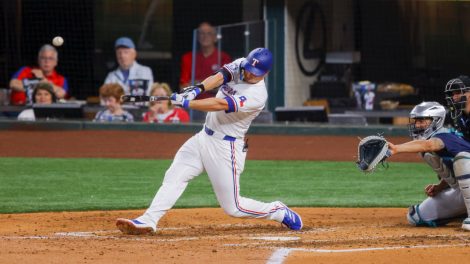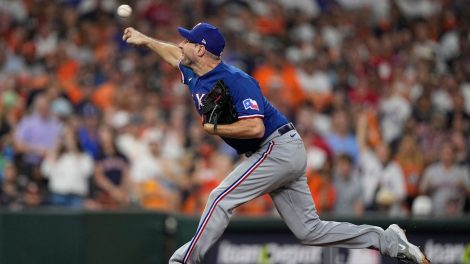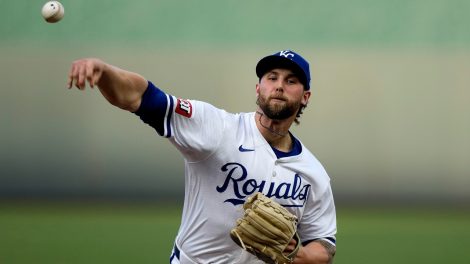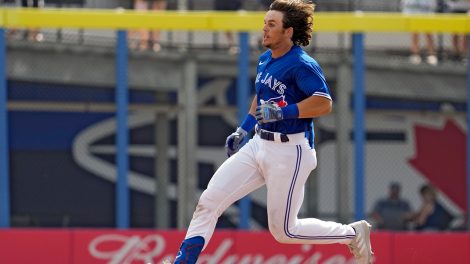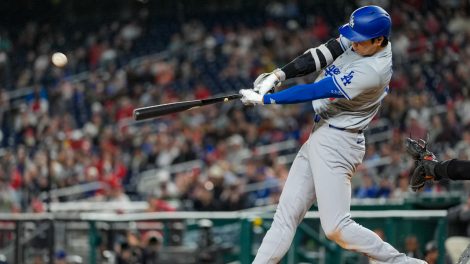DUNEDIN, Fla. — Like many across Major League Baseball, J.P. Howell once hated the Toronto Blue Jays.
“Oh, absolutely I did,” Howell says, standing in the Dunedin sun wearing the colours of that very team. “But then you get here, and the ones I didn’t like are the ones I get along with the most. It’s like, what the hell?”
For Howell, who signed a one-year, $3-million contract this off-season to pitch out of Toronto’s bullpen, part of that is the natural dislike many professional athletes must foster towards their opponents. You don’t want to beat someone as much when you like them. But another part of that is Toronto’s reputation—one of a brash, cocky, crap-talking, hotheaded outfit north of the border that doesn’t always oblige baseball’s many unwritten codes.
Of course, perception and reality don’t always correspond. Howell, no stranger to saltiness himself on the field of play, wasn’t quite sure what he was walking into this spring. But having been around the team for nearly a month now, his perspective has shifted with haste.
“From the outside you think these guys are just a bunch of rowdy boys. But, nah, they’re focused. They’re professional. They take care of business. And they have a lot of fun, man, that’s for sure,” Howell says. “It’s such a different vibe than what I expected. These guys are just getting after it. This camp reminds me more of, like, a football combine. These guys are in the gym all the time—they’re working out like animals, they’re eating right, getting their sleep. It isn’t always like that.”
And maybe Howell can relate to things not always being what they seem. Take his recent career. After pitching to a 2.24 ERA over 255 appearances for the Tampa Bay Rays and Los Angeles Dodgers from 2012-15, the left-hander appeared to have an exceptionally rough 2016, struggling to a 4.09 ERA over 50.2 innings. For a reliever, one of the most abundant positions in baseball, that’s often not a good sign.
But bullpen stats can be deceptive. They’re the small sample of small samples. ERAs can fluctuate wildly with one or two poor outings, which is exactly what happened to Howell.
He made two disastrous appearances in early April in which he allowed six runs without recording an out. He then performed reliably over nearly four months, until late August when he allowed six runs over two awful outings once again. Howell was his normal self in between, but those four bad outings tarnished his overall numbers.
Meanwhile, Howell’s peripheral numbers told a different story. He kept his strikeout, walk, home run and ground ball rates close to level with the year prior. His velocity took a very slight dip, but it’s not like the left-hander has ever relied on heat to get hitters out, featuring an 86-88 m.p.h. fastball throughout his career. His batting average on balls in play was consistent. The one area that truly spiked was his HR/FB rate, which actually indicates some poor luck.
You can see why the Blue Jays, who Howell spent all that time hating, gave him a call this winter, willing to bet on a bounce-back season.
[relatedlinks]
“It was a real frustrating year,” Howell says. “I just got caught slipping in April and then in August I had a bad spell. It was tough. There were some tough breaks. And the hitters out-grinded me a little bit, I guess you could say. But that won’t be the case this year.”
The Blue Jays are also betting on a very cerebral pitching mind and positive clubhouse presence, two attributes that don’t always transfer over to success on the field, but certainly don’t get in a pitcher’s way, either.
“Great guy—tremendous guy,” says Blue Jays manager John Gibbons. “He’s a leader. He helps keep things in line out there in the bullpen like [Jason] Grilli does. I’ve heard nothing but great things about him.”
Howell’s variation makes the most of his pitches
While it can seem like Howell’s repertoire is rather limited—he generally relies on two pitches, a sinker and a curve—his many variations on those offerings can up that arsenal to five. He’ll lean heavily on his two-seamer, which has helped him maintain a ground ball rate of 58.5 per cent over the last four seasons—among the top 20 relievers in baseball. But he’ll also feature a four-seamer when he wants to pitch aggressive early in a count or if he thinks a hitter is tracking his sinker.
And the curveball is a whole other story. Howell used the same traditional curveball for the first five years of his career before he started learning different ways to throw the pitch from teammates. He picked up a little bit from Matt Moore in Tampa; some more from Clayton Kershaw in Los Angeles; and plenty from Rich Hill, who spins his pitches about as much as anybody in the game.
Now, Howell throws three different variations of his curve, each of them with different release points and movement. Think of the numbers on a clock. His primary curveball moves straight down from the 12 to the 6 as many traditional breaking balls do. Another one moves from the 10 to the 4 and is effective against left-handers who have to reach out to chase it as it sweeps out of the zone. And a third moves from 11 to 5, which Howell will throw to right-handers in order to get the ball under their bat while still giving the impression of a pitch that will land in the zone.
Howell says he can adjust the velocity on the three curves at will and that he achieves the different motions by flexing his wrist forward and back. And while his command can vary from outing to outing, he can generally locate them wherever he pleases.
“Most days I can put them where I want to,” Howell says. “Some days only two of them are there and the third is harder to get to. It just depends on where you’re at in the season. Sometimes with fatigue it’s hard to throw the sweeping one for some reason. But on a lot of days everything’s working.”
Deception is crucial and Howell works hard to maintain his arm slot so that all three look the same out of his hand. He’ll also add or remove spin from the ball to help shape the pitches and either increase or decrease the acceleration of his arm to create even more variance between them.
“Hitters are smart. When you drop your arm or raise it, they see that. If you go out to get around the pitch, they’ll see that, too,” Howell says. “So, it’s all in the wrist angle.”
Research critical to Howell’s game plan
Howell does plenty of homework in order to determine what will be most effective against different hitters. He watches opponents intensely on video and studies heat maps to figure out where different hitters like to see the ball. He’ll also read behaviour in the batter’s box, and analyze how different setups lead to different swings.
“I’m looking at where his bat is, what kind of natural hitter he is, what he’s trying to do in that particular game situation,” Howell says. “Is he a power guy? Does he go opposite field all the time? Does he pull the ball a lot? You take that info and build a plan.”
Take David Ortiz. Howell’s faced the recently retired Red Sox slugger more than any other hitter in the game, holding him to just five hits and four walks in 27 plate appearances, and striking him out four times. Howell found Ortiz often looked for pitches outside when he faced him, so he moved away from his 12-6 curve and threw more that moved from 10 to 4.
“I want it to go off the plate,” Howell says. “I want to make that pitch look like it’s going to stay out there forever, and then he wants to go get it and it moves away at the last second.”
Of course, Ortiz liked to pull the ball plenty as well, and when Howell sensed Ortiz was in that mode he would go back to his 12-6 offering which looks much more enticing to a hitter trying to hook the ball.
“Then it stays on that path. If I threw one that started to move away from him, he may stop and not go after it,” Howell says. “You want it to go straight down so that he’ll swing over it.”
Reading what a hitter is trying to do takes a lot of care and attention. But when Howell figures a batter out, he can toy with him. When he knows where a hitter is looking, he’ll throw a curveball that looks like it’s heading for that location before it darts away.
“If he’s wanting the ball in a certain area, I want to give it to him there, just a little lower and a little off of where he wanted it,” Howell says. “You want to give them very close to what they want. It’s tough and a little dangerous. But it can be effective.”
It’s all an important reminder: whether you’re trying to hit one of Howell’s curveballs, or you’re on the outside looking in at a hated team, or you’re writing off a reliever after a down year—perception and reality don’t always correspond.


